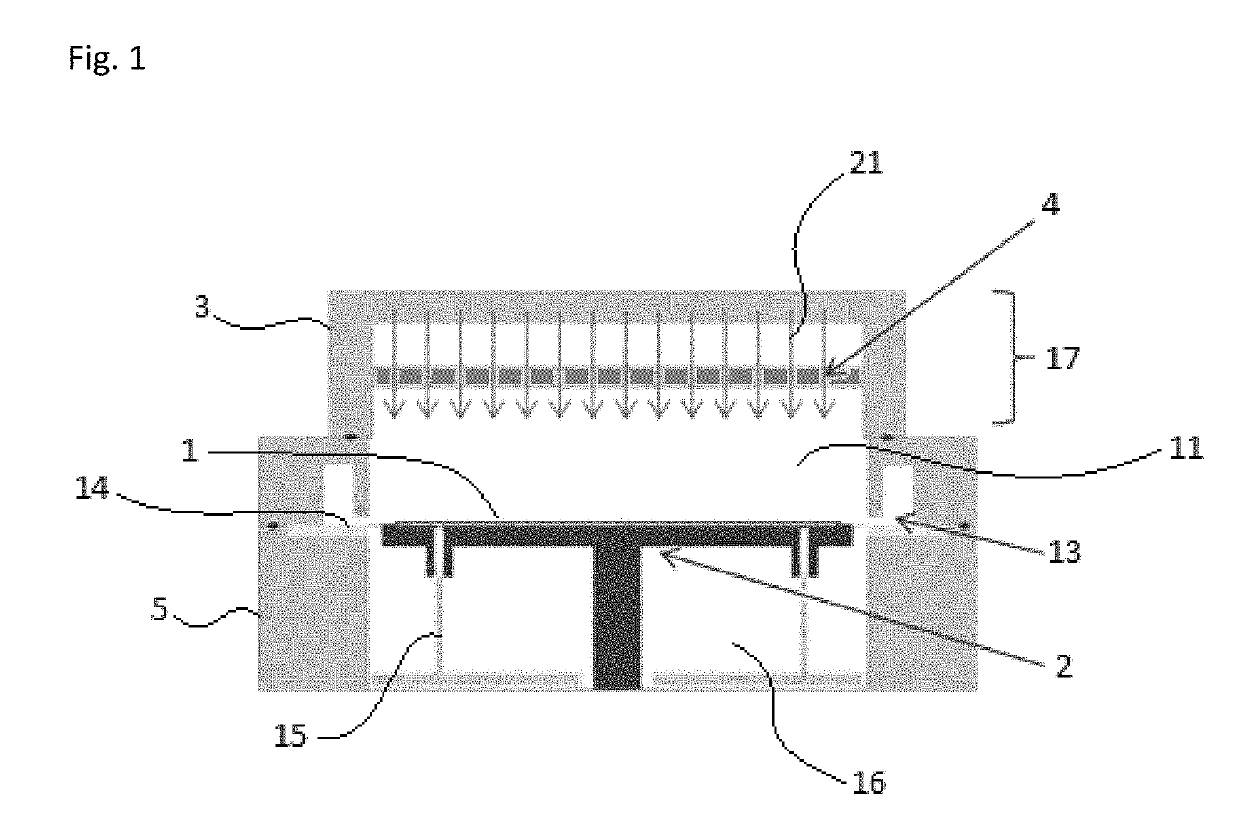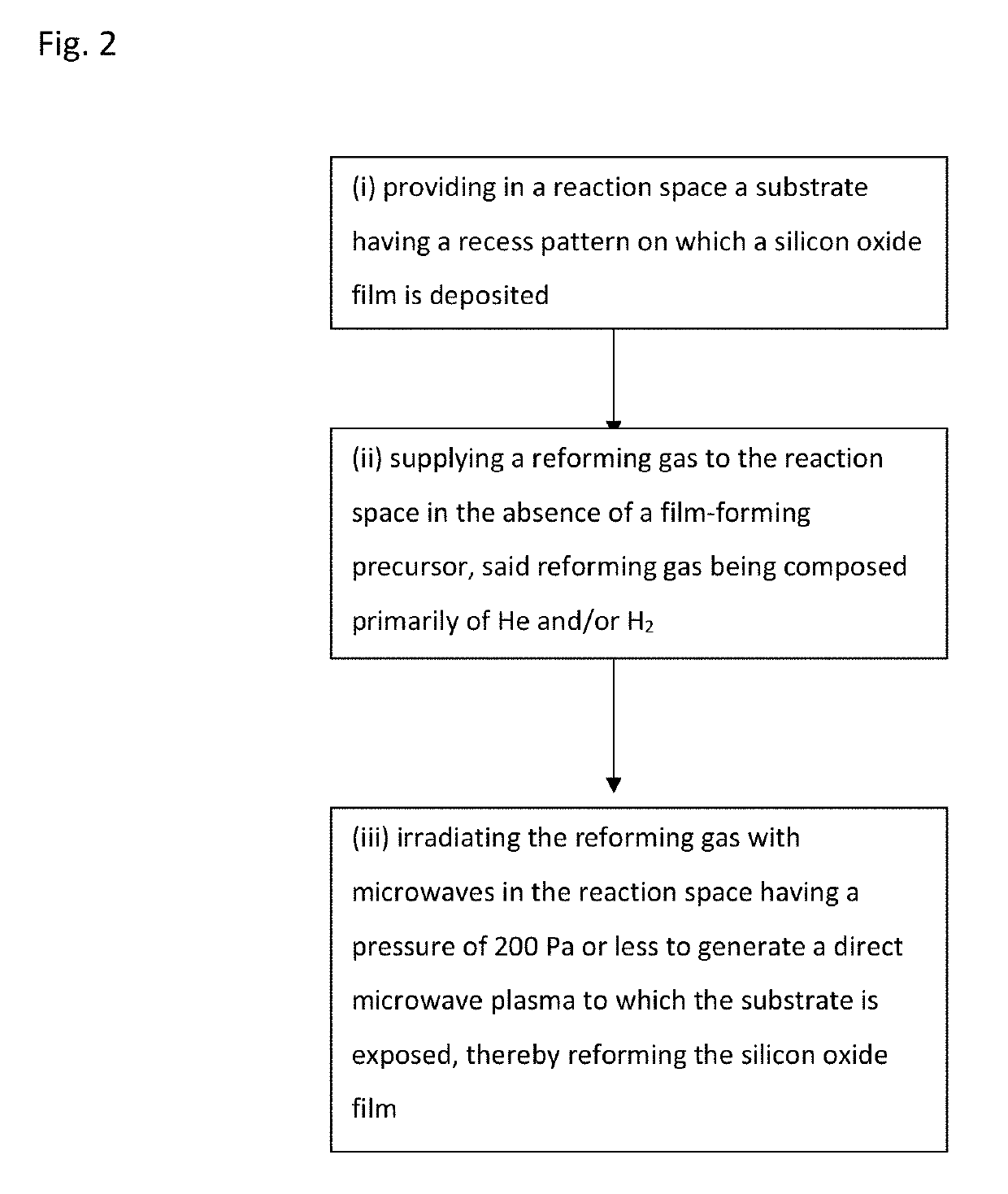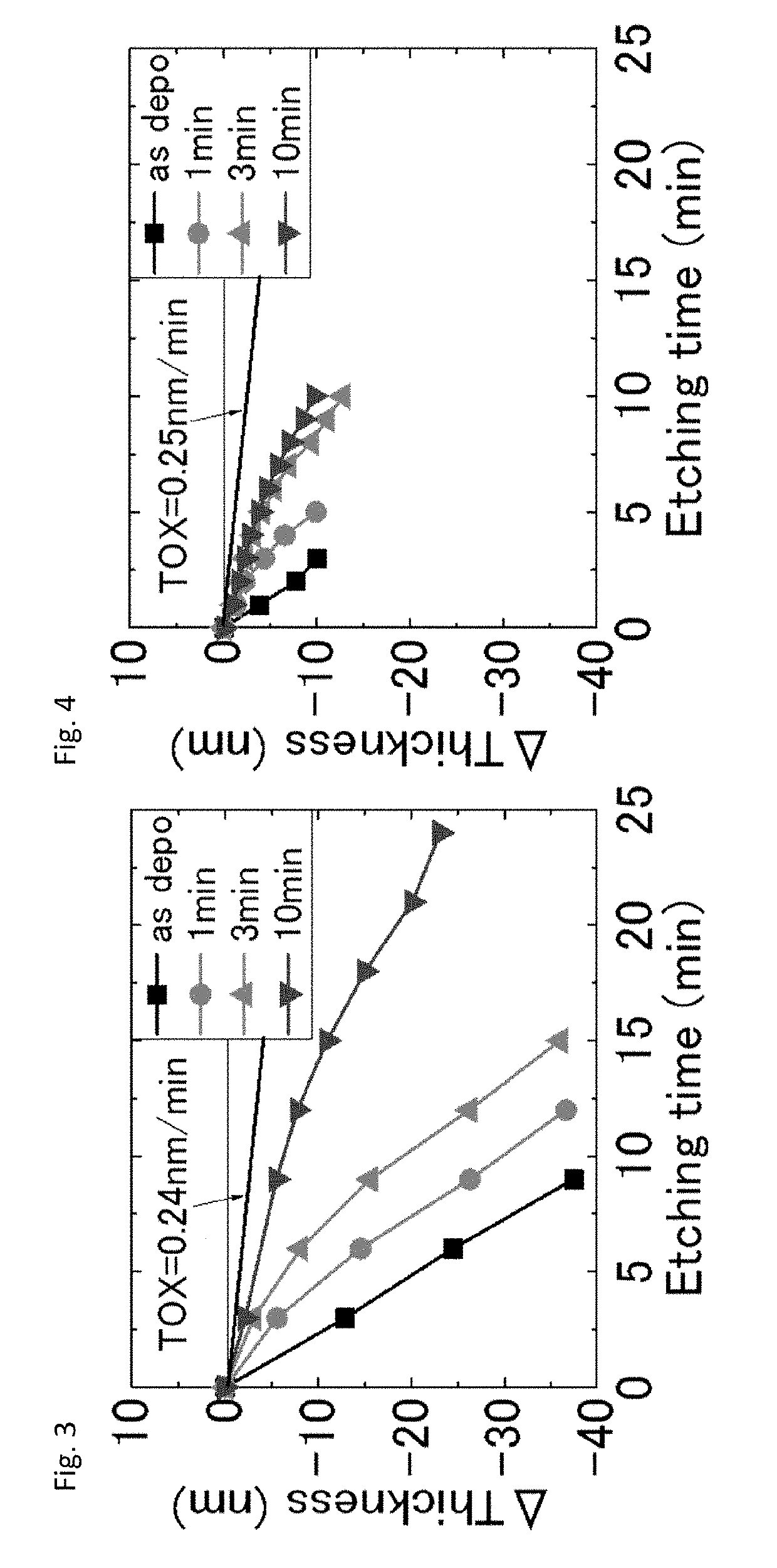Method of post-deposition treatment for silicon oxide film
a technology of silicon oxide film and post-deposition treatment, which is applied in the direction of chemical vapor deposition coating, coating, electric discharge tube, etc., can solve the problems of significant deformation of the quality of the film deposited on the sidewall of the recess, and achieve the effects of low electron density, high plasma density and high degree of film quality improvemen
- Summary
- Abstract
- Description
- Claims
- Application Information
AI Technical Summary
Benefits of technology
Problems solved by technology
Method used
Image
Examples
example 1
[0063]A substrate (having a diameter of 300 mm and a thickness of 0.7 mm) on which a silicon oxide film (a blanket film) having a thickness of 30 nm was deposited by PEALD was prepared. The substrate was loaded to the microwave apparatus illustrated in FIG. 1 and processed therein to reform the silicon oxide film using a sequence illustrated in FIG. 2 under conditions shown in Table 2 below. Helium gas was used as a reforming gas. Multiple films deposited on the substrates, respectively, were reformed for different reforming durations (1, 3, and 10 minutes) and then subjected to wet etching treatment under conditions shown in Table 3 below using an etching duration as a variable. Etched amounts of the silicon oxide films were measured to determine the film quality of each film.
TABLE 2(numbers are approximate)Conditions for Reforming StepPressure30 PaSubstrate temperatureRoom temperatureReforming gasHeFlow rate of reforming gas (continuous)100 sccmFrequency of microwaves2.45 GHzMicro...
example 2
[0066]Silicon oxide films deposited on substrates, respectively, were reformed and wet-etched in a manner substantially identical to that in Example 1, except that the film-reforming step was conducted at 200° C.
[0067]The results are shown in FIG. 4. FIG. 4 is a graph showing etched quantity (Δthickness) of silicon oxide film in relation to etching duration of the film before and after post-deposition reforming treatment using a He microwave plasma at 200° C. when varying the duration of reforming treatment. The graph of FIG. 4 also shows etched quantity (Δthickness =0.25 nm / min.) of thermal oxide film in relation to etching duration of the film as a reference etched quantity. As is shown in FIG. 4, as in FIG. 3, generally, the longer the reforming duration the less the etched quantity of the film per unit time became, i.e., the more the film reformation was manifested. Particularly, the etched quantity per unit time of the film reformed at 200° C. for 1 minute and that of the film ...
example 3
[0068]Silicon oxide films deposited on substrates, respectively, were reformed and wet-etched in a manner substantially identical to that in Example 2, except that film-reforming effect was determined as WERR (wet etch rate relative to that of thermal oxide film) when the etched quantity of each film was less than approximately 3 nm.
[0069]The results are shown in FIG. 6. FIG. 6 is a graph showing wet etch relative rate (WERR) of silicon oxide film in relation to etched depth of the film before and after post-deposition reforming treatment using a He microwave plasma when varying the duration of reforming treatment. As shown in FIG. 6, the film reforming was manifested from the surface to a depth of approximately 3 nm, and the WERR was as low as 2 to 4 when the reforming duration was 1 to 10 minutes, particularly as low as approximately 2 when the reforming duration was 3 to 10 minutes.
PUM
| Property | Measurement | Unit |
|---|---|---|
| Temperature | aaaaa | aaaaa |
| Temperature | aaaaa | aaaaa |
| Fraction | aaaaa | aaaaa |
Abstract
Description
Claims
Application Information
 Login to View More
Login to View More - R&D
- Intellectual Property
- Life Sciences
- Materials
- Tech Scout
- Unparalleled Data Quality
- Higher Quality Content
- 60% Fewer Hallucinations
Browse by: Latest US Patents, China's latest patents, Technical Efficacy Thesaurus, Application Domain, Technology Topic, Popular Technical Reports.
© 2025 PatSnap. All rights reserved.Legal|Privacy policy|Modern Slavery Act Transparency Statement|Sitemap|About US| Contact US: help@patsnap.com



